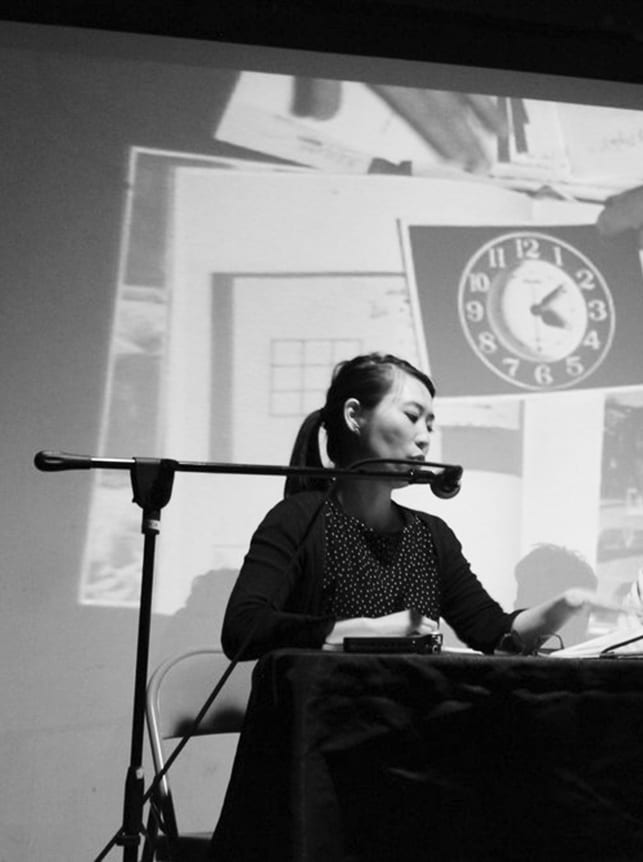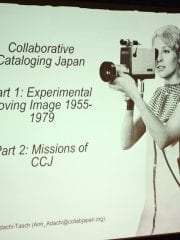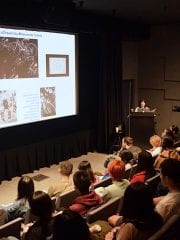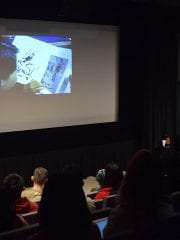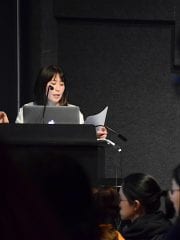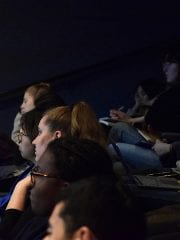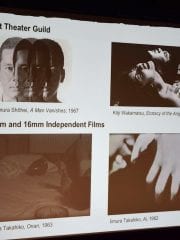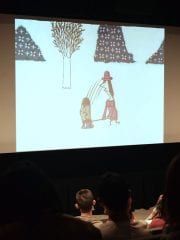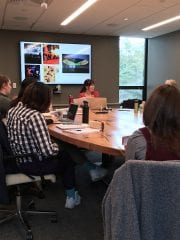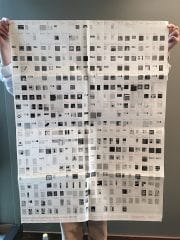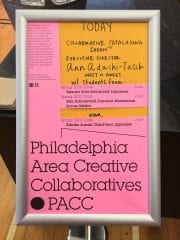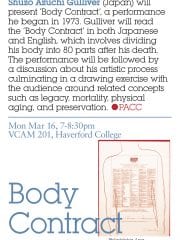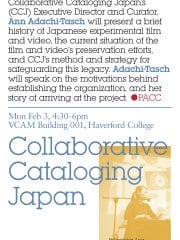Spring 2020 PACC
1/2
Introduction
In partnership with Collaborative Cataloging Japan and Tokyo-based multidisciplinary artist Shuzo Azuchi Gulliver we will examine the materiality and ephemerality of Japanese experimental and expanded cinema practices that challenge the conventions of spectatorship through participatory modes of engagement. ‘Translation Through Time: Image, Text, and Language’ will ask, how do you make the relationship between the screen and the audience active not passive? How do you deconstruct linear narratives of time through exhibition and performance? How do you preserve, document, and disseminate the legacy of moving images as opposed to still images? What are the differences between ‘analogue’ and ‘digital’ archiving? What are the issues involved in translation between Japanese and English? We will consider these questions in an attempt to interpret and translate the role of fine art and performance in and across various media.
This project was active during Spring 2020. The planning for this project began a semester in advance, and follow-up extended past the active period.
Collaborators
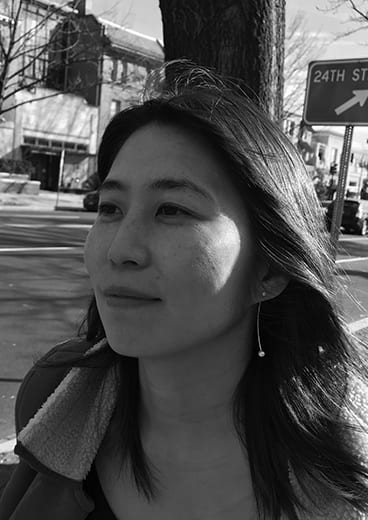

Executive Director
Collaborative Cataloging Japan
Collaborative Cataloging Japan is a a not-for-profit that supports preservation and archiving of Japanese historical and experimental moving image works. Adachi-Tasch has worked at The Museum of Modern Art, where she managed projects for the Museum’s global research initiative titled Contemporary and Modern Art Perspectives (C-MAP), and contributed to the launch of its digital platform, post (post.at.moma.org). In 2009, she organized a touring screening program and publication of Japanese experimental video and film, Vital Signals at Electronic Arts Intermix. She has given presentations and written about the status of media archiving in Japan, at The Museum of Modern Art, Tokyo; Tate Modern (London); Keio University Art Center (Tokyo); and the Archives of American Art (Washington D.C.), among others.
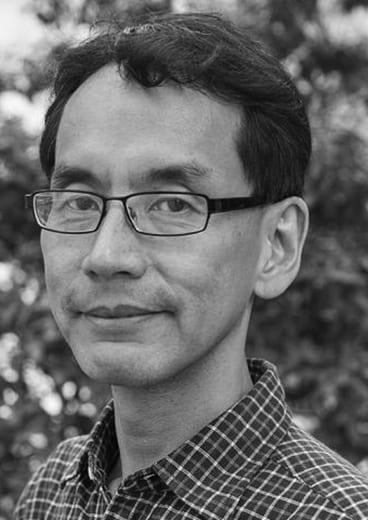

Senior Lecturer and Director of Japanese Language Program
Haverford College
Tetsuya Sato, a native of Hokkaido, Japan, received his M.Ed. in general curriculum and instruction from Seattle University, M.A. in Japanese language/pedagogy from the University of Oregon, and Ph.D. in East Asian Studies (Japanese linguistics) from the University of Arizona. His academic journey in the United States began with studying English as a second language and Chinese, and evolved to second language acquisition, Vygotsky’s sociocultural theory, language and identity, and critical discourse analysis. Previously, he taught Japanese at the University of California, Santa Barbara, and the University of Michigan, Ann Arbor.
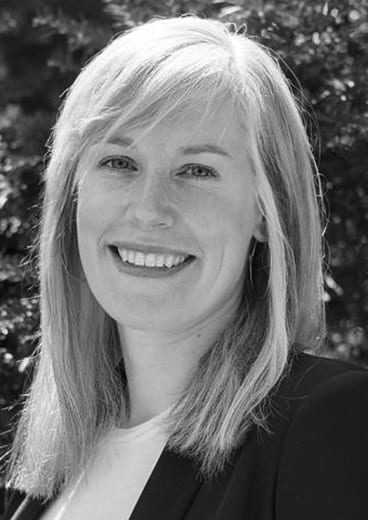

Assistant Professor of East Asian Languages and Cultures; Assistant Professor of Visual Studies; and Director of the Visual Studies Program
Haverford College
Schoneveld’s research and teaching engages with modern and contemporary Japanese art, cinema, and visual culture examining how these methods of cultural production have evolved into unique modes of address, exhibition practices, and pedagogical strategies in light of a rapidly globalizing world. Her book Shirakaba and Japanese Modernism: Art Magazines, Artistic Collectives, and the Early Avant-garde (Brill 2019) provides a new comparative framework for understanding the tensions between the local and the universal that accompanied the global development of modernism by examining one of the most significant Japanese art and literary magazines of the early twentieth century. Schoneveld’s current book project Naomi Kawase and the Future of Japanese Cinema seeks to address the dearth of scholarship on the role of Japanese women directors within national and world cinema cultures by evaluating Kawase’s auteur status at the intersection of film history, reception theory, gender, and identity. Schoneveld’s research has received support from the Japan Foundation, the Andrew W. Mellon Foundation, the Luce Foundation, the Metropolitan Center for Far Eastern Art Studies, and the Japan Art History Forum.
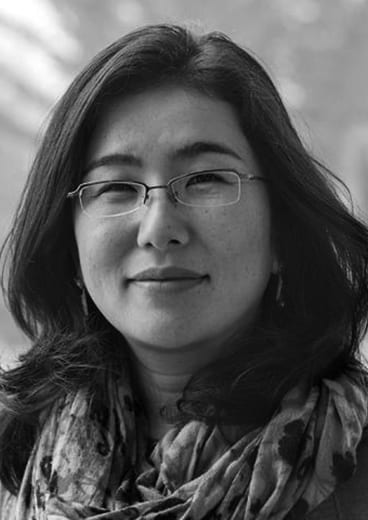

Lecturer in Japanese
Haverford College
Kimiko received her M.A. in Japanese Linguistics/Pedagogy from the University of Wisconsin-Madison. Her recent teaching and research interests focus on the issue of diversity, inclusion, and professionalism in Japanese language education. She has designed course modules collaborating with other faculty, centers on campus, and a local business. One of which is the Advanced Japanese’s Indigo-Dyeing Exhibition at John B. Hurford Center.
Events
Collaborative Cataloging Japan: Ann Adachi-Tasch, Executive Director
Non-Profit Partner
Philadelphia, PA
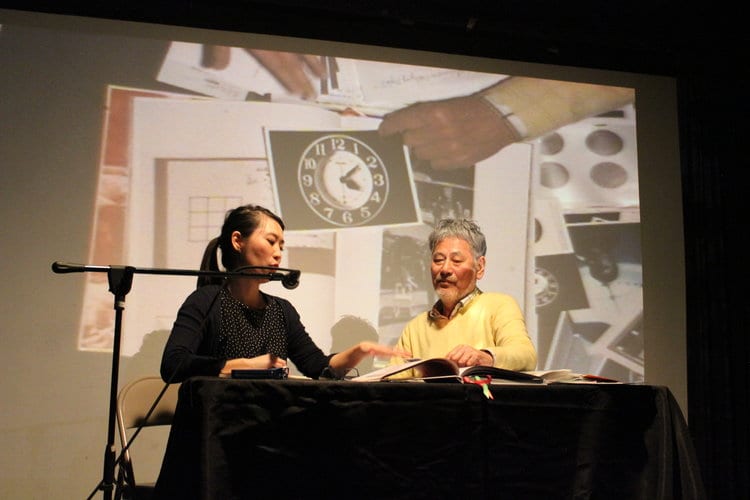

Collaborative Cataloging Japan (CCJ) is an international, 501(c)3 non-profit organization dedicated to preserving, documenting, and disseminating the legacy of Japanese experimental moving image made in 1950s—1980s, in order to enable their appreciation by a wider audience. Without this effort, this unique sector of Japanese cultural heritage, which historically has been underrepresented and unsupported, would remain available to only a very few. Buried in artists’ studios or independent archives, many works are in danger of literal disappearance as film and video mediums continue to deteriorate. The scope of moving image focus includes fine art on film and video, documentation of performance, independently produced documentaries, experimental animation, and experimental television.
Photo Credit: Collaborative Cataloging Japan
Shuzo Azuchi Gulliver, Lead Artist
Artist in Residence
Shiga, Japan
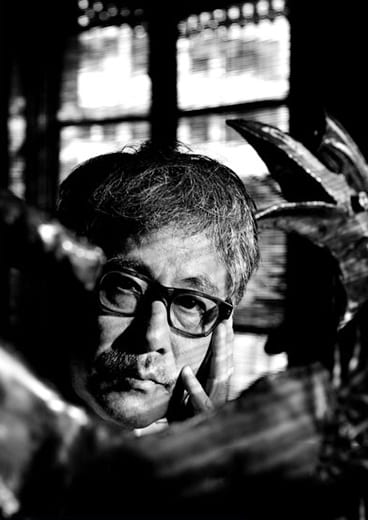


Shuzo Azuchi Gulliver (b. 1947, Shiga) is an artist with a multidisciplinary practice. As a high school student, he formed the artist collectives The Play and Remandaran and staged on-street performances of a conceptual nature in Kyoto and Osaka. Living between Tokyo and the Kansai region in the late-1960s, he began to attract the attention of the media and was considered to be a representative figure of the hippie (fūten) phenomenon, going by the nickname Gulliver, which he continues to keep as his artist name. In 1967, he presented a series of conceptually driven films at the discotheque L.S.D in Tokyo. Together with Rikuro Miyai, he began presenting the film in Tokyo jazz clubs, such as Pit Inn and Noa Noa as well as at events organized by the Art Film Association in Kyoto and Osaka. As a participant of the Intermedia Art Festival at the discotheque Killer Joe’s, Tokyo, in 1969, Gulliver presented Cinematic Illumination (1968-69), a work involving eighteen slide projectors that illuminated the unique 360-degree environment. The outdoor performance Flying Focus (1969) involved a tubular balloon into which Gulliver projected colored patterns using an overhead projector. Since he has continued to remain active as an artist working in the fields of sculpture, performance, and new media with an interest in the body, scale, and humor. He is represented by Tajana Pieters (Ghent) and Aoyama Meguro (Tokyo) and has performed or exhibited his work recently at Tate Modern and Tokyo Photographic Art Museum.
Photo Credit: Shuzo Azuchi Gulliver
Collaborative Cataloging Japan w/ Ann Adachi-Tasch, Executive Director, CCJ
Presentation & Discussion
2.3
4:30-6pm, VCAM, Haverford College


In a traditional lecture setting, Collaborative Cataloging Japan (CCJ)’s Executive Director, Ann Adachi-Tasch will present a brief history of Japanese experimental film and video, as well as the current situation of the film and video’s preservation efforts and CCJ’s method and strategy for safeguarding this legacy. In addition, Adachi-Tasch will speak on the motivations behind establishing the organization, and her story of arriving at the project. This session will provide an overview of CCJ’s mission while presenting the behind-the-scenes background. This lecture will include video clips of film work excerpts and a Powerpoint presentation.
Photo Credit: Stephanie Bursese
Advanced Japanese Course Visit w/ Ann Adachi-Tasch, Non-Profit Partner
Course Visit
2.5
11:15-12:45pm, VCAM, Haverford College
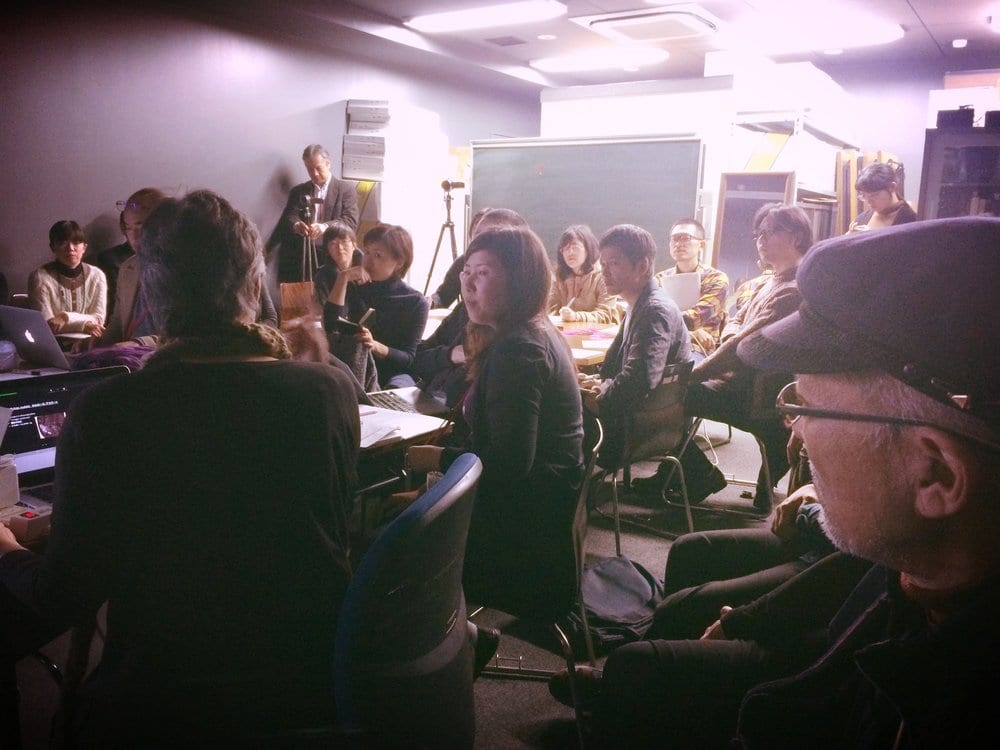

Executive Director of Collaborative Cataloging Japan, Ann Ann Adachi-Tasch, will share her work around archives and CCJ to Tetsuya Sato’s “Advanced Japanese” course.
Ann will focus on defining the concept of an archive, with special attention to the difference between physical and digital archives. We will use the example of the work by Collaborative Cataloging Japan, to examine the challenges of recording history (deterioration, issues of presenting material out of its context, etc.), as well as documenting performance, or event-based occurrences.
In this session, students will have the chance to think about, and discuss, the following subjects:
-What is an archive?
-Digital vs physical archive, their different functions
-Documenting history: issues of deterioration
-Documenting history: how to discuss the history that does not have documentation
-Documenting performance: reference to the event
-Documenting history & performance: the process of translation and re-presentation
Reading for this session: アーカイブ特有のあり方(足立アン
Photo Credit: Collaborative Cataloging Japan
Student and Collaborators Lunch w/ Ann Adachi-Tasch, Non-Profit Partner
Lunch & Discussion
2.5
1-2pm, VCAM, Haverford College
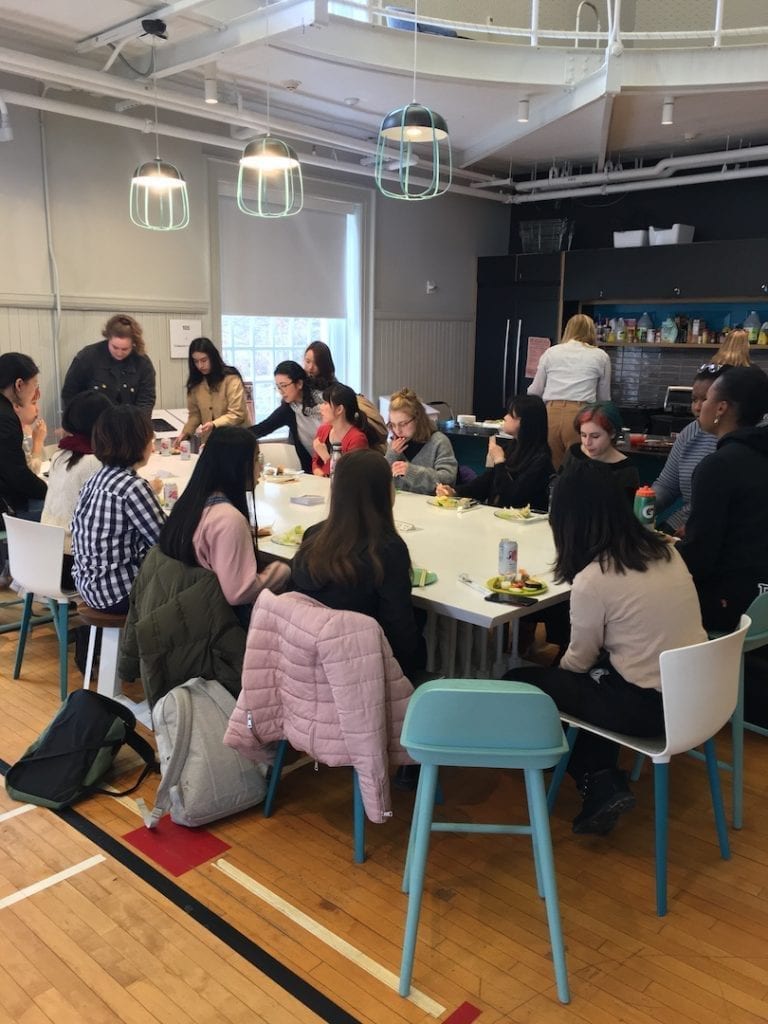

Executive Director of Collaborative Cataloging Japan Ann Adachi-Tasch will mingle and visit with the students in Tetsuya Sato’s Course ” Advanced Japanese”, Erin Schoneveld’s Course “Japanese Modernism Across Media” and Kimiko Suzuki’s Course “Third-Year Japanese”.
Photo Credit: Stephanie Bursese
Japanese Modernism Across Media Course Visit w/ Ann Adachi-Tasch, Non-Profit Partner
Course Visit
2.5
2-3pm, Lutnick Library, Haverford College
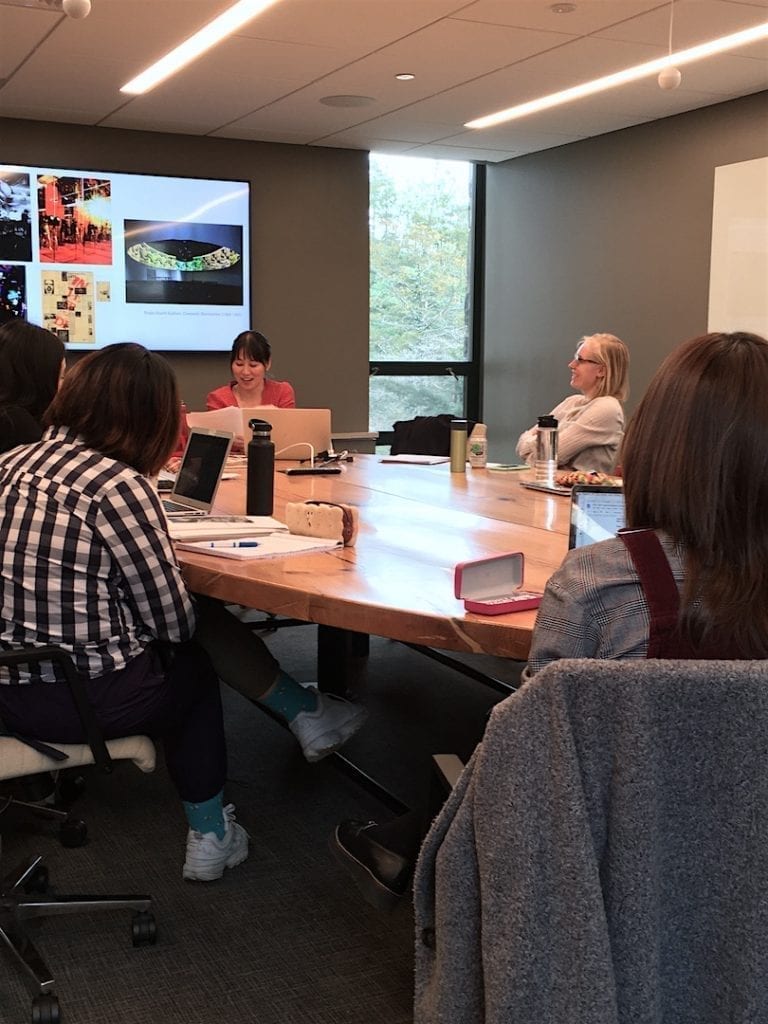

Executive Director of Collaborative Cataloging Japan, Ann Ann Adachi-Tasch, will engage the students in Erin Schoneveld’s “Japanese Modernism Across Media” course in a discussion around her work at CCJ and her relationship with Shuzo Azuchi Gulliver.
She will bring in a few relevant topics from the morning session with Tetsuya’s course which include:
-What is an archive?
-Digital vs physical archive, their different functions
-Documenting history: issues of deterioration
-Documenting history: how to discuss the history that does not have documentation
-Documenting performance: reference to the event
-Documenting history & performance: the process of translation and re-presentation
Photo Credit: Stephanie Bursese
Body Contract w/ Shuzo Azuchi Gulliver, Lead Artist
Performance & Workshop
3.16
6:30-9pm, VCAM, Haverford College


*This event was canceled due to the COVID19 pandemic*
Artist Shuzo Azuchi Gulliver (Japan) will present ‘Body Contract’, a performance he began in 1973. During this event, Gulliver will read the ‘Body Contract’ in both Japanese and English, which involves dividing his body into 80 parts after his death and entrusting the deposit of them after his death to his friends. Each contract covers one part of his body with one friend. After this performance, Gulliver will speak about the artistic process and ideas present in the work. The audience will then be asked to participate in a drawing exercise around related concepts such as legacy, mortality, physical aging, and preservation (amongst others) and consider these decisions in relation to their own body. Students from Tetsuya Sato’s Course ” Advanced Japanese”, Erin Schoneveld’s Course “Japanese Modernism Across Media” and Kimiko Suzuki’s Course “Third-Year Japanese” will be present for the event. All supplies will be provided.
Image Credit: Shuzo Azuchi Gulliver
De-Time Opening Reception & Artist Talk W/ Shuzo Azuchi Gulliver, Lead Artist, and Ann Adachi-Tasch, Non-Profit Partner
Reception & Artist Talk
4.9
4:30-7pm, VCAM, Haverford College
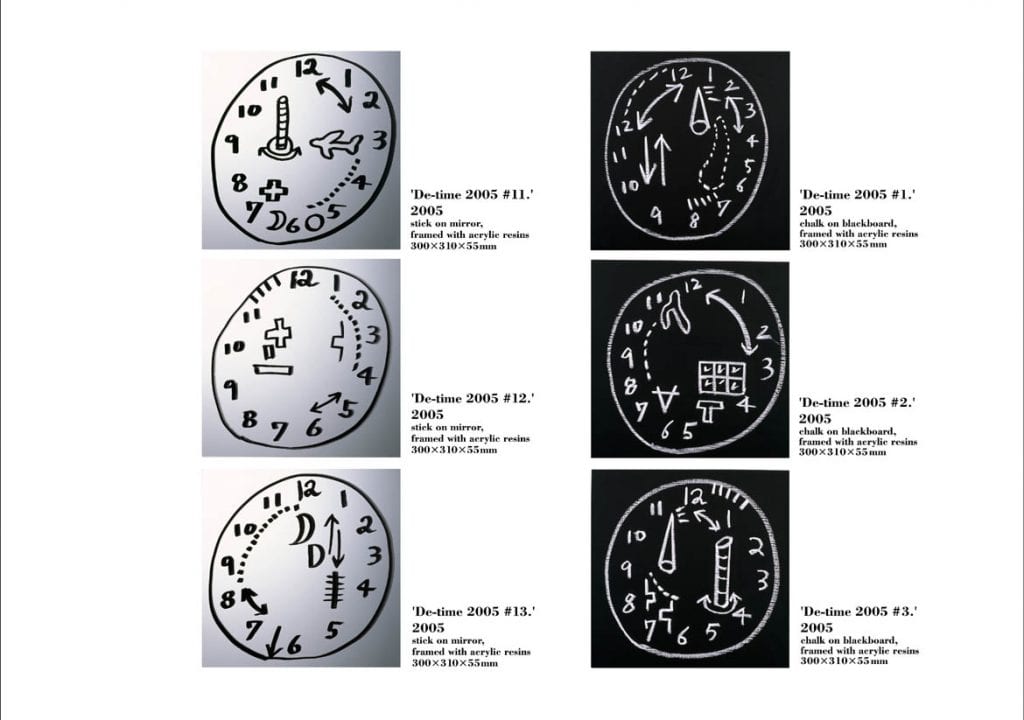

*This event was canceled due to the COVID19 pandemic*
Shuzo Azuchi Gulliver: De-time
Exhibition on View April 9–May 15, 2020
Thursday, April 9, 2020
A public conversation with artist Shuzo Azuchi Gulliver and Ann Adachi-Tasch, Executive Director, Collaborative Cataloging Japan
4:30–5:30 p.m.
VCAM Screening Room 001
De-time Exhibition Opening & Reception
5:30–7:00 p.m.
VCAM Screening Room 001, VCAM Create Space 006, VCAM Projection Wall
In De-time, iconic multi-disciplinary artist Shuzo Azuchi Gulliver (b. 1947 inShiga, Japan) presents video works, chalk paintings, photographs, and archival materials variously engaged with the intersection of temporality, design, communication, and the archive. Presented as part of Haverford College’s annual STRANGE TRUTH series, the exhibition also features the documentation of cinematic Illumination viewable on the VCAM Projection Wall during the April 9th exhibition opening reception as well as a program of short video pieces in the VCAM Screening Room.
Supported by the Hurford Center’s Philadelphia Area Creative Collaboratives (PACC) initiative and Collaborative Cataloging Japan.
Image Credit: Shuzo Azuchi Gulliver
Notable Japanese Alumni of Bryn Mawr and Haverford produced by Haverford & Bryn Mawr College Students
Website Archive
Haverford College & Bryn Mawr


Notable Japanese Alumni of Bryn Mawr and Haverford produced by Haverford & Bryn Mawr College Students
“The Japanese Language Program at the Bi-College Department of East Asian Languages and Cultures at Haverford College and Bryn Mawr College offers introductory to advanced level Japanese courses. Students in the “Advanced Japanese” course in the Spring 2020 semester looked into the lives of our notable Japanese alumni, namely Tsuda Umeko (Bryn Mawr, 1904) and Arishima Takeo (Haverford, 1892), and completed written reports as well as short videos based on their research. (All the video reports are narrated in Japanese with English subtitles.) Our plan is to repeat the course every two years and add more works by students on this website.”
The guidance from Ann Adachi Tasch around digital archives was an inspiration and resource to the students during the development of this website.
Image Credit: Notable Japanese Alumni of Bryn Mawr and Haverford homepage screenshot
Read lessArchive
Reference
— Collaborative Cataloging Japan
— Interview with Artist Shuzo Azuchi Gulliver
— ‘More Than Cinema’ at Pioneer Works in Red Hook, NY Co- Curated by Ann Adachi Tasch
— Shuzo Azuchi Gulliver
— Shuzo Azuchi Gulliver’s Cinematic Illumination at MOMA
— NOTABLE JAPANESE ALUMNI OF BRYN MAWR AND HAVERFORD
